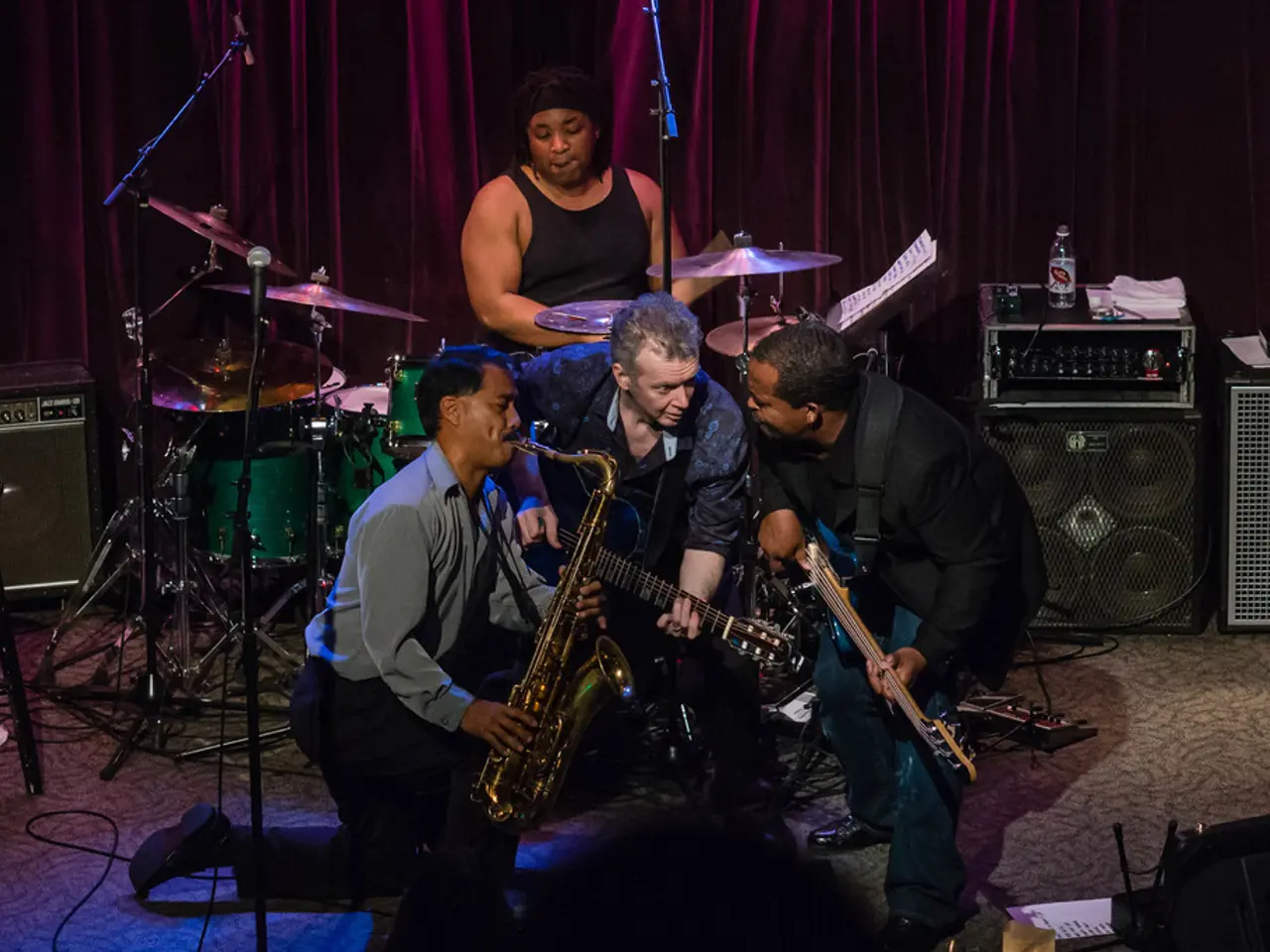How Reverb Effects Can Both Enhance or Disrupt Your Audio Blend
In the realm of music production, reverb plays a crucial role in recreating or enhancing the natural phenomenon of sound echoing off surfaces like walls, ceilings, and floors. This article aims to guide you through the effective use of reverb, its benefits, and common pitfalls to avoid.
Reverb is not an optional extra; it's a key component in making your tracks sound natural, professional, and full of life. Convolution reverb, in particular, excels at ultra-realistic recreations of real-world spaces, making it ideal for sound design, cinematic projects, or highly realistic productions.
However, without careful consideration, reverb can lead to low-end rumble and high-frequency harshness. To avoid this, it's essential to match the reverb length to the track's tempo and energy, and to EQ the reverb return if necessary to preserve clarity and balance.
Reverb helps create a sense of space, distance, and emotion in a track. Without it, mixes can sound dry, flat, and unnatural. Using Aux/Send Channels instead of Inserts can save CPU, keep the mix cleaner, and let multiple sounds share the same "space" more naturally.
Key tips for effectively using reverb include using it to build atmosphere and character. For instance, creating risers with 100% wet reverb and a long tail, reversing them for dramatic effects, or layering synthetic pads with reverb for texture. Consider the role of direct sound versus reverb: close-miking captures more direct sound with less reverb for intimacy, while distant miking allows more natural reverb to add space.
Common mistakes to avoid are applying too much reverb or delay on vocals, which reduces clarity by smearing the sharp edges that help vocals cut through. Heavy reverb on low frequencies can create muddiness in the mix. Always match reverb type and settings to the instrument and context.
In music production, different types of reverb can dramatically change the feel of a track. Spring reverb, for example, is metallic, bouncy, and slightly vintage, best for guitars (especially electric), retro or lo-fi tracks. Hall reverb is big, lush, and spacious, ideal for vocals, orchestral instruments, ballads, ambient music. Plate reverb is smooth, dense, and bright, best for vocals, snare drums, lead instruments.
Setting a Pre-Delay separates the dry sound from the start of the reverb tail, keeping the original sound clear and punchy. Ignoring the groove and timing when setting reverb levels can blur the rhythm of a track, especially on drums and percussive elements. Soloing reverb when setting levels can give a false sense of how it fits in the full mix.
In summary, effective reverb use balances adding spatial depth and ambiance without sacrificing presence or clarity. This approach enhances the production’s texture and realism while maintaining intelligibility and punch. By carefully selecting reverb types, adjusting levels to taste, considering microphone placement or synthetic techniques, and avoiding excessive use that blurs key sonic details, you can elevate your mixes to new heights of realism and emotion.
Gadgets such as smartphones and other digital devices with built-in recording capabilities can benefit greatly from understanding the art of reverb, as it adds depth, character, and an improved sense of space to the recordings. In the realm of music production, technology offers various reverb types, each with its unique flavor; for instance, hall reverb is ideal for vocals and orchestral instruments, while spring reverb suits electric guitars and lo-fi tracks.




